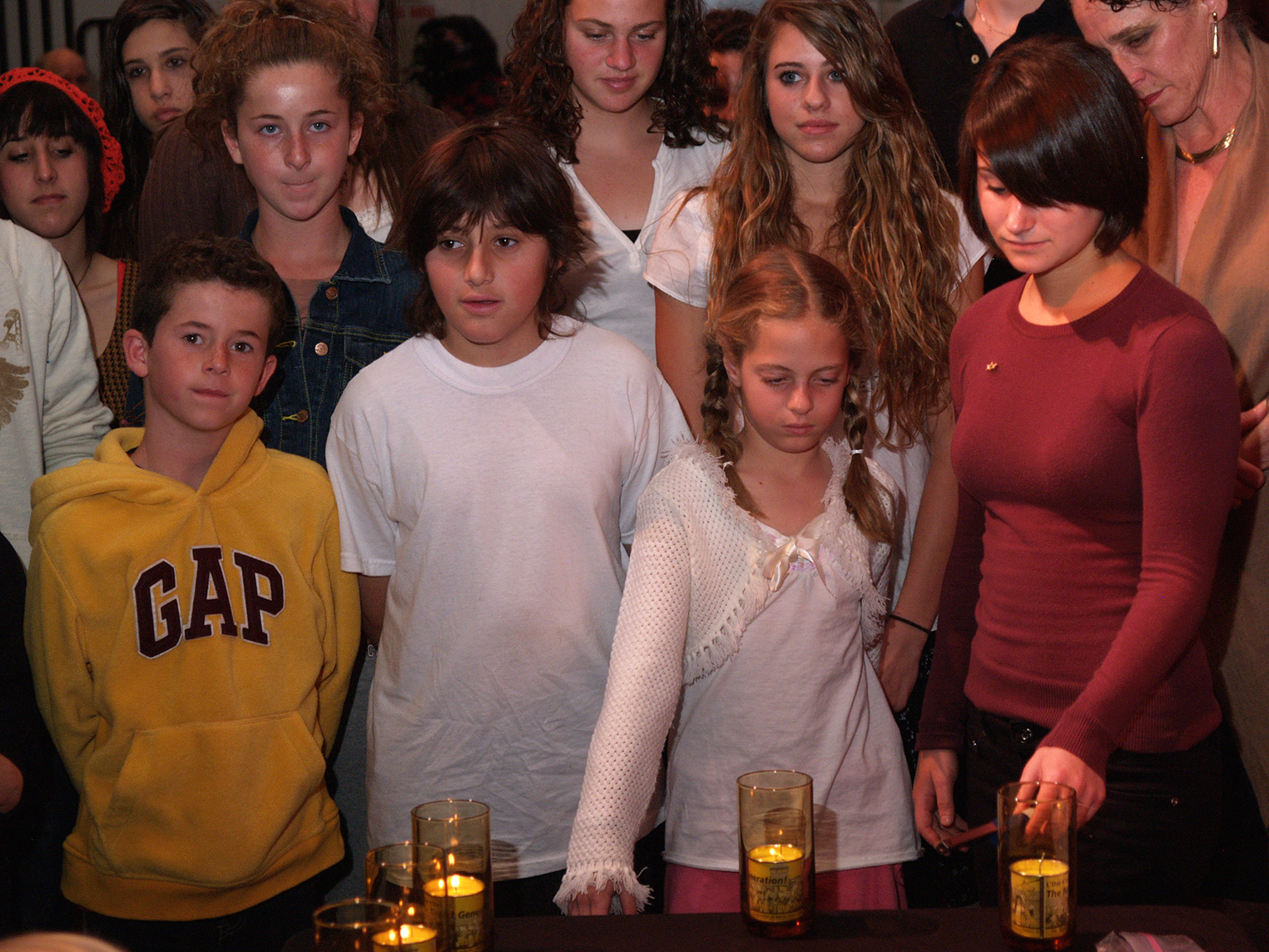
THIRD GENERATION—Grandchildren of Holocaust survivors
light candles at San Diego
commemoration today in memory of those who perished.
Survivors and families featured
at
San Diego Yom Hashoah observance
Below, First Row:
Gussie Zaks and Michael Bart co-chaired the Yom HaShoah commemoration
at which Hannah Marx and Lou Dunst were among survivors lighting candles in
memory of those
who perished.
Second row: Marx's granddaughter, Tovah, spoke for the
third generation of the Holocaust Survivors to an audience of several
hundred. Instrumental works befitting the
occasion were played by Myla Wingard Rosen and her mother Eileen Wingard.
Third Row:
Three cantors sang during the commemoration: Cantor Joseph Furmansky;
his father, Cantor
Max Furmansky, and Cantor Mauricio Bogomolny.


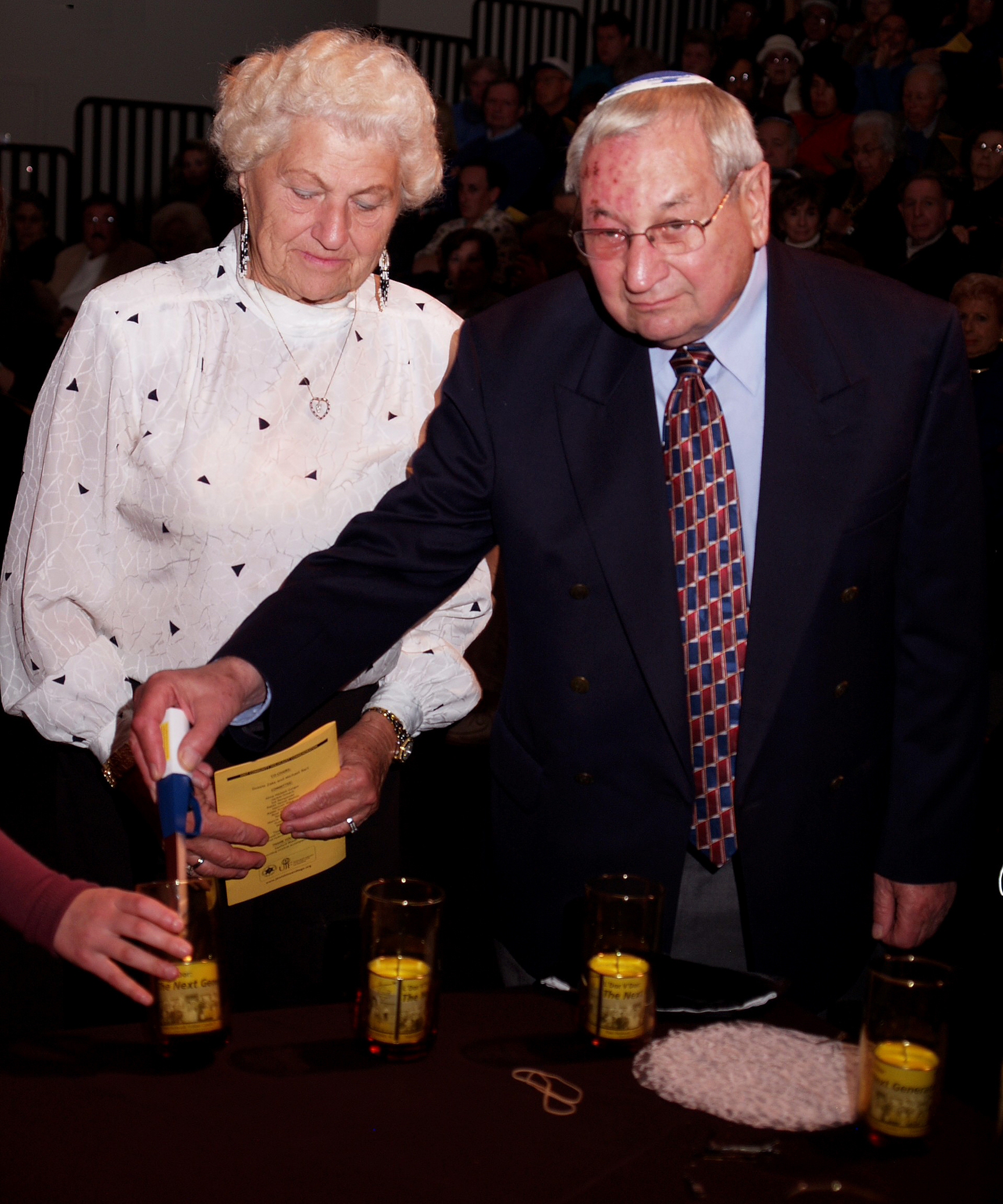
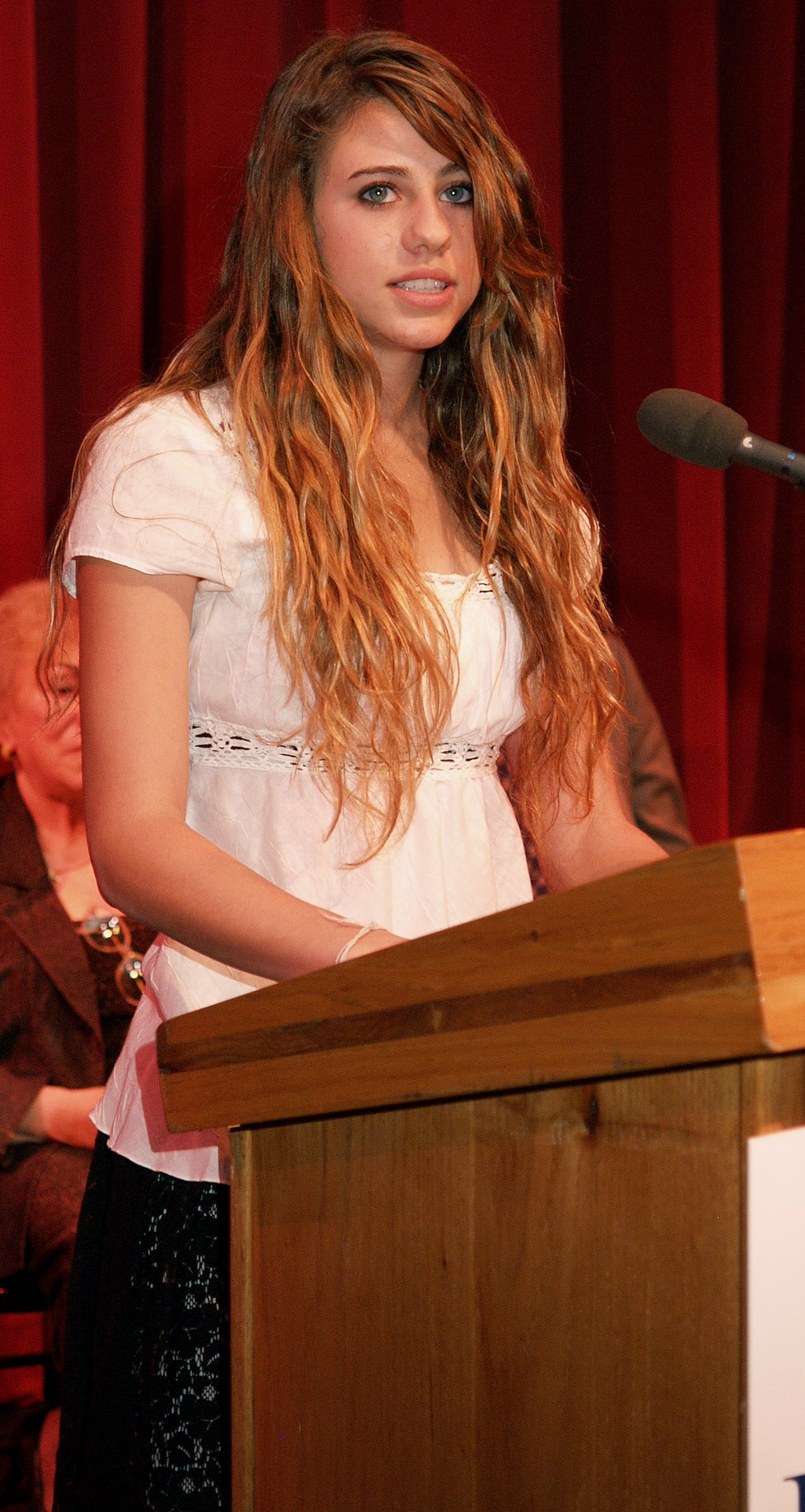 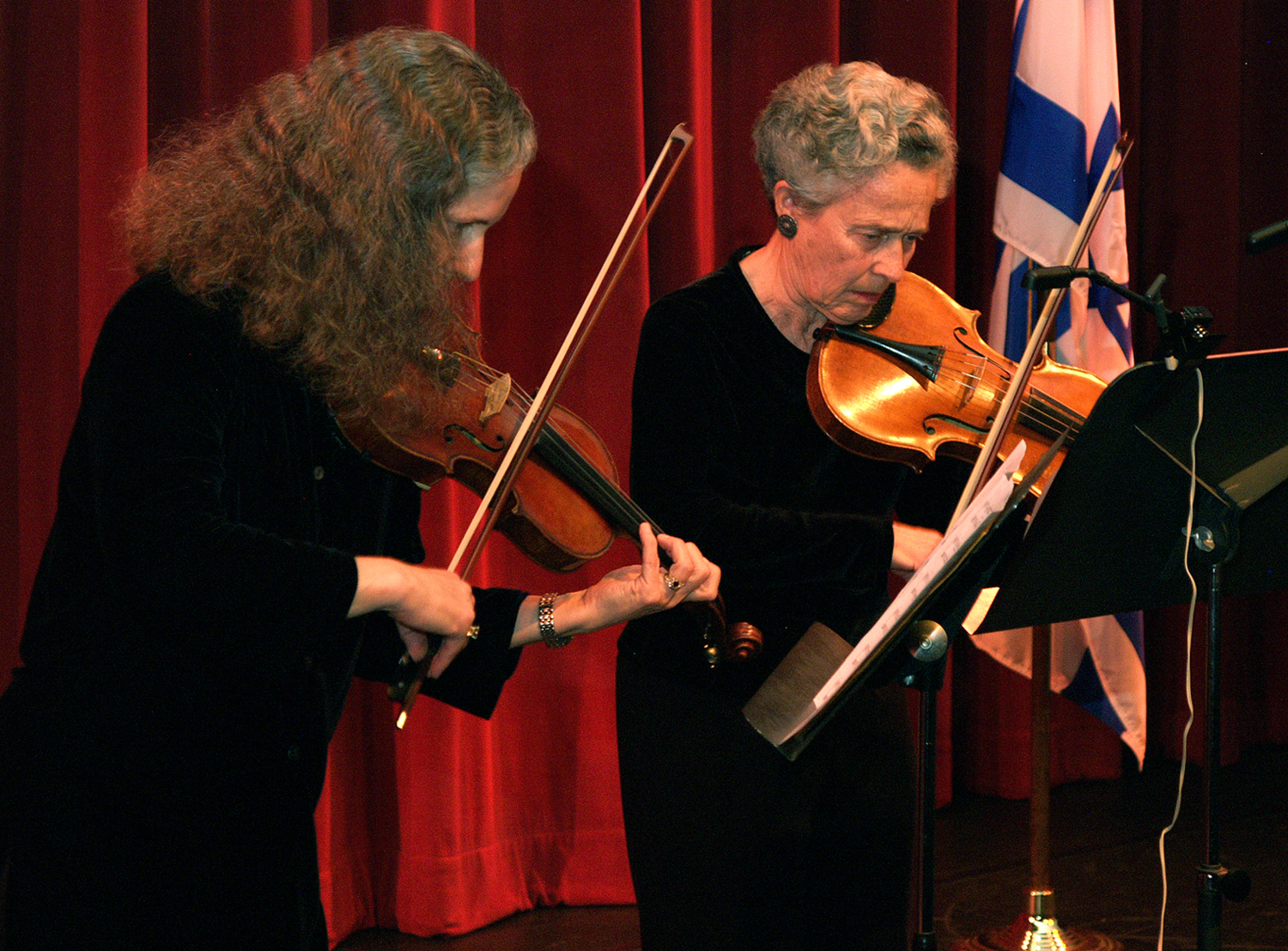
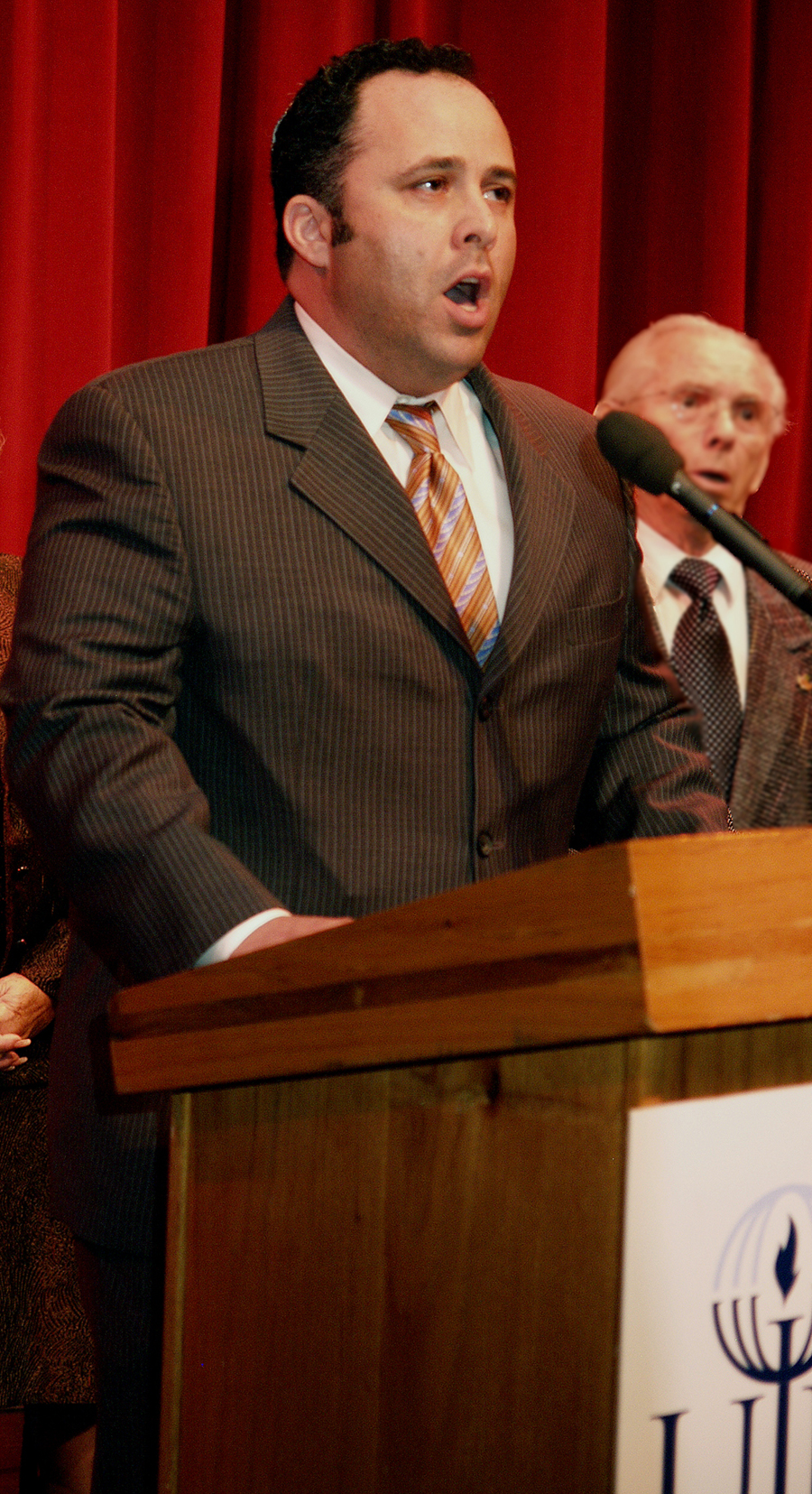 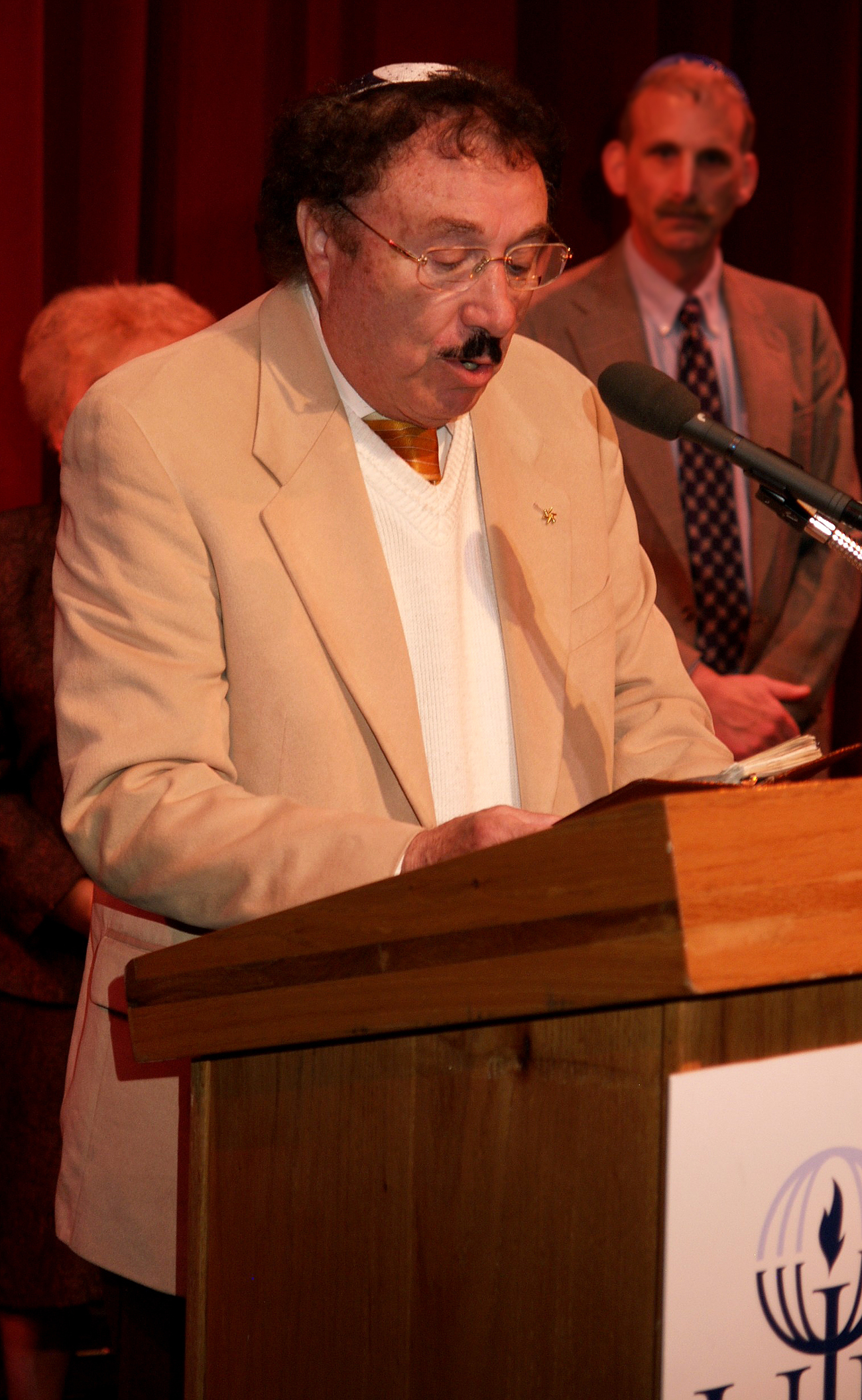 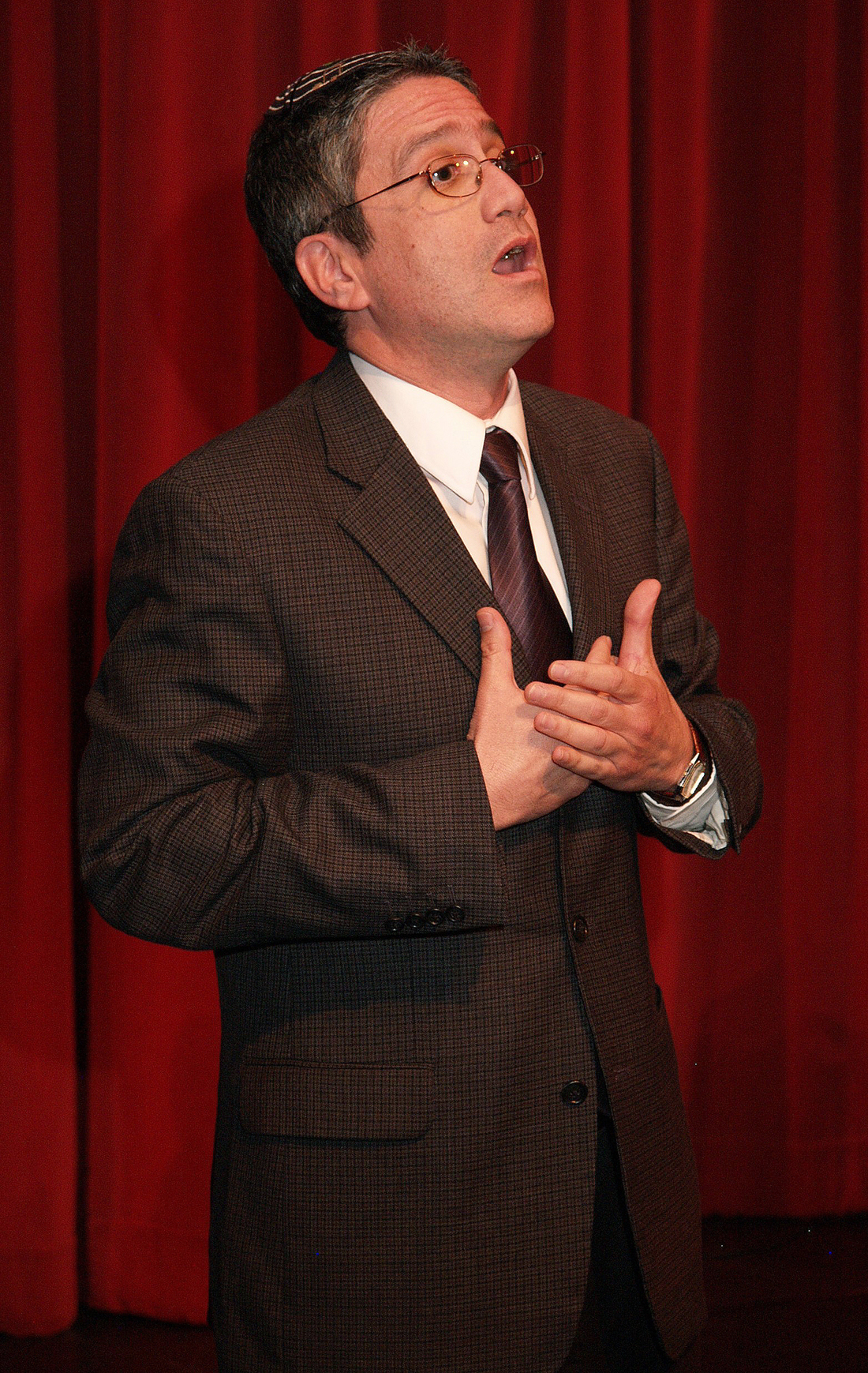
------------
180 photos discovered of family that
perished in the Shoah. Who are they?
By Bruce
Kesler
After 60-years, 180 photos that were hidden in the wall of a small
town in
Poland were discovered, which show a large family and their many
friends
in their ordinary pursuits before being slaughtered in the
Holocaust. The town,
Chelm, had one of the oldest Jewish communities in Poland, dating
from the
12th century. The story of the photos is
here, forgotten till now:
The pictures are another heartbreaking example of a thriving,
vibrant
Jewish community, later erased by the Nazis. One can peek into
an entire
world of young, normal Jewish life: bike rides, parties, romance
and fun,
strolls in the woods, ice skating and even fund raising for the
Keren
Kayemet Leisrael (Jewish National Fund). It is all there.
Most of the people in the photographs are unidentified, young,
not members
of the family. One of the prominent women in the pictures is a
beautiful
woman who appears to be Shlomo Boden’s girlfriend. Her name is
probably Genia Gross or Genia Grossi. Is this name familiar to
anyone?
Shlomo himself served in the elite Kosciusco Division of the
Polish
army. He was captured early in the war, but managed to flee the
POW
camp and return to his family in Chelm. Eventually, he arranged
the
family’s escape into the countryside, informing every family
member
of the photographs hidden in the chimney wall.
One hundred of the photos are
here, together on one page.Take a look.
There’s nothing gory, just ordinary people enjoying life and their
future prospects.
Think for a moment: Don’t these people look just like your
relatives’ (if of
European stock) old photos? Think for a moment: What futures, what
contributions to the world was lost by their ruthless elimination?
Think for
a moment: Imagine different color to the faces, and how many
millions more
have been slaughtered since on other continents? Think for a moment:
How
many tens of millions have been saved from this slaughter by the
United States
and a few other moral countries willingness to fight to avoid
tyrants from doing
so again? Think for a moment: If not for Israel as a last refuge for
the few
survivors, and America for others from other genocides, where would
they have
gone? Think for a moment: Where are you when such atrocities are
denied, or
occur now?
Today is Holocaust Remembrance Day. Think for a moment.
Thanks to
Glenn Reynolds for bringing the photo link to
our attention.
___________________________
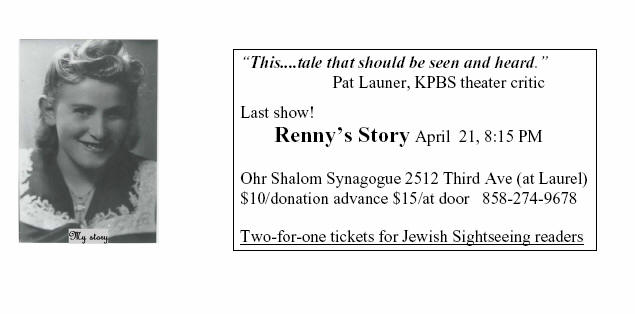
__________________________________
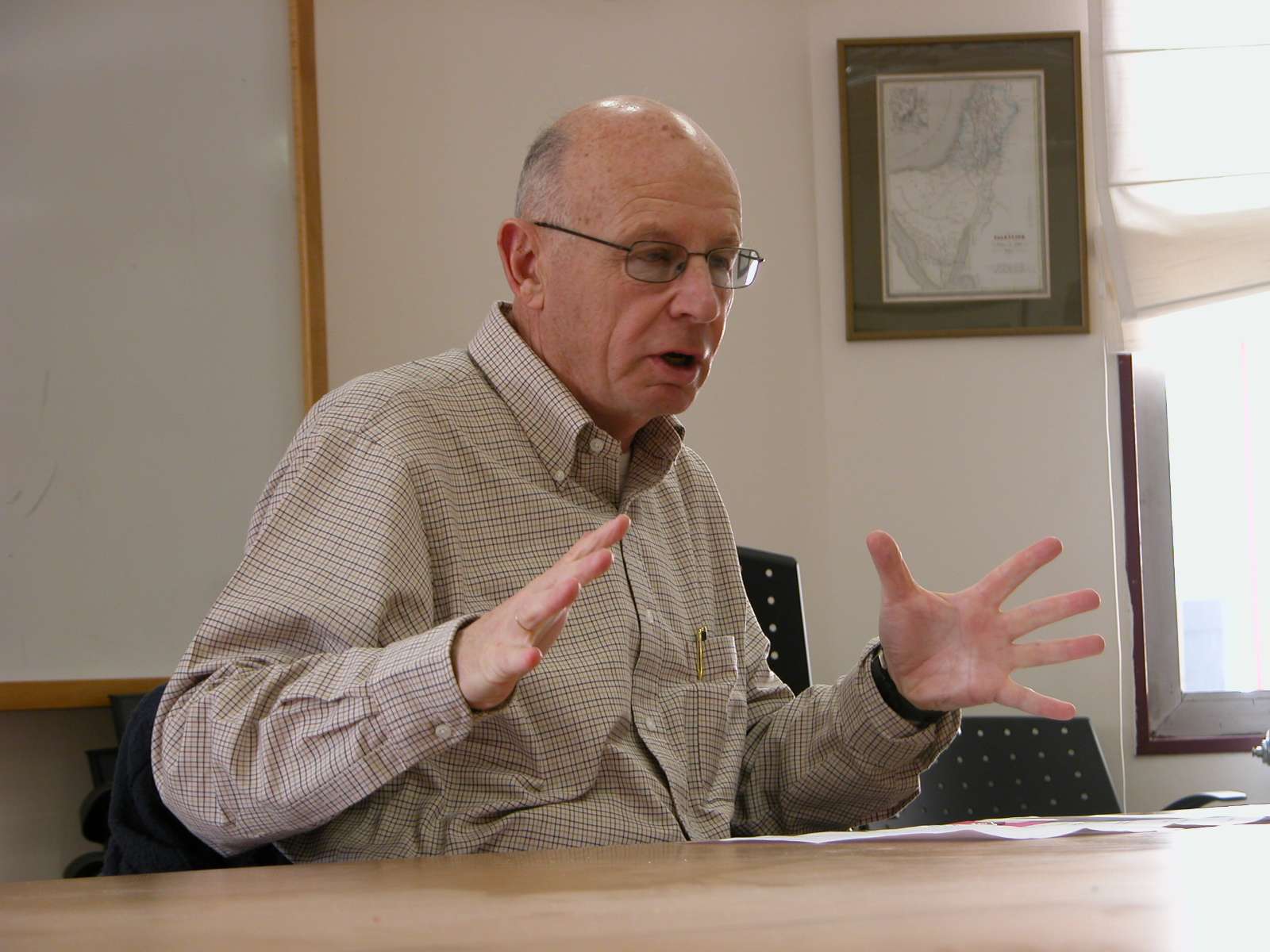
Letter from
Jerusalem
_________________By Ira Sharkansky____________
The Shoah and Israel are eternally linked
In this week is Holocaust Day in the Hebrew calendar. Next week is
Memorial
Day for Israelis killed as soldiers or as civilians on account of
Arab violence.
Both are key events in Israel's civil religion. "Civil religion"
refers to items of
cardinal importance, equivalent to matters of high religious import
even though
they are not part of traditional ritual. When I was growing up in
the United
States during the 1940s and 1950s, the American civil religion
celebrated
participants and events in World War II. When I was at the
University of
Georgia during the 1960s, the War Between the States was still
important in
the region's civil religion. Now I'm not sure if the United States
has a civil
religion, given the prominence of multi-culturalism and personal
agendas,
and severe criticisms about the country's recent wars.
Here the Holocaust and the IDF are vibrant icons of the civil
religion. They
are associated with one another insofar as the IDF is widely viewed
as the
sole means of protecting the society from another Holocaust. Most
Israelis
serve in the military. We know its faults, but we invest heavily,
both
economically and emotionally.
Both the Holocaust and the IDF are under attack from outsiders.
We know about the widely criticized Iranian president and his
Holocaust
deniers and minimizers. More sensitive is an action by a
representative of
the Vatican.
He has refused to attend a Holocaust ceremony at Yad Vashem due to
an
item in the museum. It is a statement about Pope Pius XII. The
phrasing
appears carefully designed to emphasize unresolved controversies
about the
Pope's role in the 1940s. The boycott of one of the country's most
honored
ceremonies, at one of its most honored places, has
provoked a round of
accusations and counter-accusations. Examples appear in a
publication of
the
Catholic League and in the
Jerusalem Post.
There is potential here for commotion more appropriate to the Middle
Ages
than to the 21st century. I hope we have heard the last of this, but
I doubt it.
If the Vatican and its minions present a serious disturbance to
Israel's memory
of the Holocaust, a somewhat more parochial challenge to the IDF has
been
occupying the City Council of Olympia, Washington. It is an effort
by the
parents of Rachel Corrie and others to create a sister city
relationship with
Rafah in Gaza. There is substantial support for Rachel's mission in
her home
town. Opponents of the proposal are trying to sidestep the emotional
issue of
her activity (she was killed by an IDF bulldozer while opposing an
operation
in Gaza during 2003). They argue that sister cityhood would be
taking sides in
a complex controversy a long way from Olympia.
Rachel Corrie died while opposing the IDF on an active battlefield.
Except
for politicians concerned not to offend American sensitivities, and
the Israeli
left, I doubt that her death is viewed any differently from that of
other enemy
combatants. She was not wearing a Palestinian uniform, but neither
do most
of the Palestinian fighters. She may not have been armed, but lots
of Arabs
seeking to frustrate the IDF are not armed with conventional
weapons. The
differences between her and them would have been too subtle for an
Israeli
soldier in the noise and dust of combat.
Occasionally it is necessary to remind myself and others that
issues debated
elsewhere as in an academic seminar or a conventional political
dispute carry
the greatest sensitivity here. When Rachel Corrie was
challenging the IDF at
work, she was standing in the way of soldiers fighting for their
country, their
families, and themselves. Those soldiers were our children, the
children of our
friends, or friends of our children.
Southern Lebanon, and Southern Beirut, provide recent examples
of how the
IDF may react to a threat. Those areas remain largely in ruin.
Self-described
humanitarians criticize Israel's actions in Lebanon, often
without mentioning
Hezbollah's initial attacks, and the thousands of rockets it
aimed at Israeli cities.
There is also dispute here about the IDF's actions. Yet much of
our criticism is
not that it was too aggressive, but that it was not aggressive
enough.
Just last week, we had another indication of what Israel's
military might do
when the country faces a threat.
As far as I can tell, no major American newspaper carried the
story, but Israeli
media
reported that the air force came as close to shooting
down an airliner as
it has in three decades. The plane was a Continental Airlines
flight from the US
that did not comply with security procedures in its approach to
Israeli airspace.
The concern is something like 9-11, where a hijacked airliner
could be directed
at a Tel Aviv high-rise, or another prominent target.
IDF planes caused the airliner to turn away from Israel until it
confirmed that it
was under appropriate control. Reports are that the prime
minister and
commander of the air force were on the line, presumably hoping
that they would
not have to make a fateful decision. One can imagine
the follow-up if an American
plane was downed in the sea with 250 passengers. It is not only
the stuff of
nightmares. The air force destroyed a Libyan airliner in 1973
that strayed from
Cairo too close to Israel, and did not respond to
communications.
An approach to Israel is not a place for pilots to fondle the
stewardesses, to forget
to call in with the right codes, or to ignore queries from air
traffic controllers. The
crew had what was probably an unpleasant encounter with security
personnel on
the ground. Israeli and airline officials are saying that
inquiries continue.
________________
(Return to top)
Advertisement:.J

___________________
University of Haifa research
Holocaust survivors' children and grandchildren
no more traumatized than any others, study says
HAIFA (Publicity Release)—New research at
the University of Haifa contradicts
the accepted theory and popular belief
that Holocaust survivors pass down the
effects of the trauma they endured to
their children and grandchildren.
The research, which was conducted by Prof. Avi Sagi-Schwartz of the
Department of Psychology and director of the Center for the Study of
Child
Development at the University of Haifa, found that second and third
generation Holocaust survivors exhibit the same normative behaviors those
who are not the children or grandchildren of Holocaust survivors.
"We know that people working in the field who are used to the old theories
and |popular beliefs will have difficulty accepting the conclusions of this
research, but additional research done in other parts of the world yielded
similar results," said
Prof. Sagi-Schwartz.
According to Prof. Sagi-Schwartz, mental
health professionals have been
under the perception that Holocaust survivors
transmit their traumas to
their children who in turn transmit them to their
children. Even among those
who do not believe survivors transmitted their
traumas to their children, there
is a school of thought that traumas
"skipped a generation" and that the effects
of trauma could be found among
grandchildren of survivors.
This recent research examined the reciprocal
relations of 50 mothers, who
are themselves children of Holocaust child
survivors whose parents were
both killed in the Holocaust, and their one
year old children. As the research
evaluated the effects and transmission of
trauma, it was essential to base the
research on participants who had
undergone severe trauma, which is the case
when both parents are killed. The
research revealed that the traumas of the
Holocaust were not passed down
from generation to generation nor did they
"skip" a generation.
"It was clear to us that our results would
be viewed with skepticism.
One
specific theory has been accepted for years and it is difficult for
people to
accept a new theory,” explained Dr. Sagi-Schwartz. Therefore, in
addition
to
the research conducted in Israel, meta-analytical research was
conducted
which
evaluated the results of all available studies done in this
field in the
US,
Canada, England, and Israel. The data from 13 different
research projects
were compiled into one mega-sample and it was found that
the results were
similar to the results of this recent study, and when the
results differed it
was
based on how the research participants were
located. "One of the
problems
was that in many
cases researchers recruited their participants
through
organizations
that aid Holocaust survivors in distress. This meant that
a very
specific
cross-section of Holocaust survivors participated in the study
– those
with a high level of distress. This is not representative of the general
population
of survivors and therefore leads to biased results," said Prof.
Sagi-Schwartz.
Prof Sagi-Schwartz points out a few possible
reasons that the horrible
traumas
of the Holocaust were not always
transmitted to survivors' children
and
grandchildren. One of the theories is
that before the Holocaust, many
of these
people had normal family lives and
supportive environments and
were therefore
able to put their traumas aside
and resume normal lives after
the war ended and
they had children of their
own.
(Return to top)
Why numbers matter for the Shoah
By Dr. Alex Grobman
One of the most common errors in describing the magnitude of the Shoah
is the number of people who died. Figures range from 50 million to 11
million, a reflection of a fundamental misunderstanding of the uniqueness
of this catastrophe. The use of 11 million is a particularly egregious
historical distortion as it equates the destruction of the Jews of Europe
with that of the others who were murdered.
We study the Shoah to understand what transpired, why it happened and
what it tells us about the attitude of Western civilization toward Jews and
other minorities living in the West. It is not a contest to see which group
suffered the most or sustained the greatest numerical losses.
If we are to learn from history, we must be concerned about objective truth,
with transmitting what actually ensued and not allowing those with their
own particular agenda or ignorance to obscure our understanding of
what occurred. Distinguishing between different historical events does not,
and should not, lessen or demean the suffering of others.
When we refer to the Holocaust, we mean the systematic bureaucratically
administered destruction by the Nazis and their collaborators of six million
Jews during the Second World War. The Jews were found "guilty" only
because they were viewed inaccurately as a race. The Nazi state orchestrated
the attempted mass murder of every person with at least three Jewish
grandparents.
Millions of civilians and soldiers were killed as a consequence of war.
Communists, political and religious leaders were eliminated because they
were viewed as a potential threat to the Nazis. When the Nazis murdered
approximately 10,000 Polish intelligentsia, in 1939-1940, and Polish
Catholic
priesthood in western Poland, for example, they were trying to
prevent these
groups from becoming a political and spiritual force that
could unite the
country against them. Similarly, when the Nazis murdered more than
two
and one-half million Soviet prisoners of war, they were killing a |
military
force that had fought them on the field of battle.
European Jews, on the other hand, were the only people marked for
complete destruction. To the Nazi leadership, the Jews were a satanic
force
that controlled both the East and the West and, posed a physical
threat to
the
German nation. There was no way to stop this alleged
international
Jewish
conspiracy from gaining total control of the world,
the Nazis reasoned, except
to physically destroy every Jewish man,
woman, and child. Failure to do so,
Hitler believed, "would not lead to
a Versailles treaty but the final
destruction,
indeed, to the annihilation
of the German people."
When the executioners questioned their superiors about the need to kill
every
Jewish woman and child, Heinrich Himmler, head of the SS,
claimed that
he
would not have been "justified in getting rid of the men-in having them
put to
death, in other words—only to allow their children to
grow up to
avenge
themselves on our sons and grandsons. We have to make
up our minds,
hard
though it may be, that this race must be wiped off the
face of the
earth."
For a number of reasons, we do not know the exact number of Jews
who
were killed. German historian Wolfgang Benz posits that there were
6,269,027,
which is more than earlier studies by Jewish scholars. Six
Million
is the most
accurate term and acceptable.
The Nazis also annihilated a minimum of 300,000 Sinti and Roma from Germany,
the Baltic region, Ukraine, Croatia and Serbia, although the
precise number
cannot
be determined. Many thousands of others were
also killed: the physically and
mentally disabled, homosexuals, Jehovah's Witnesses,
socialists, communists, trade unionists, and political and
religious
dissidents.
None of these groups, however, were the primary target of the Nazis—
not the
mentally disabled, who were killed in the euthanasia centers in
Germany
(here
it is
to be noted that the Nazis did not export this program
to the civilian
populations
outside the Reich); not the homosexuals, who
were regarded
as social deviants
but for whom the Nazis did not have a consistent policy
(homosexuals were
persecuted only in the Reich and in
areas annexed to it
but not in countries the
Germans occupied); not the
Gypsies, who were partly
seen as "asocial" aliens
and Aryans within society
and therefore did not
have
to be annihilated completely;
and not the
Jehovah's Witnesses, who had
refused to swear allegiance to Hitler and
who declined to serve in the
German army, but who were not marked for extinction;
in fact, only a small
number were incarcerated in the camps, and
most of them were
German
nationals. The Nazis also did not single out
every socialist, communist,
trade unionist, or dissident—just those they perceived as a threat to the
Reich. The Jews
alone were the primary target of
the Nazis.
When we use 11 million or any other number than the Six Million to describe
the Shoah, we are distorting the historical record. We trivialize the
importance
of this unprecedented event in modern history, minimize the experiences of
all thosewho suffered and prevent a legitimate understanding of its causes
and its universal implications for Western society.
The stakes are too high to misrepresent history for as Richard Rubenstein
accurately noted, "Auschwitz has enlarged our conception of the state's
capacity to do violence. A barrier has been overcome in what for millennia
had been regarded as the permissible limits of political action." Our
continued
interest and fascination with the Nazi period should keep us
vigilant Jacob
Talmon observed for "it is entirely possible that this is the
end that awaits many
races and nations —maybe all of them. And the Jews will
then prove to have been
the first victim of this new experiment."
An historian Dr. Grobman's most recent book is
Battling for Souls:The Vaad
Hatzala Rescue Committee in Post War Europe.
He is also co-author of Denying
History:Who Says The Holocaust Never Happened? His newest book is Nations
United: How the |UN is Undermining Israel and the West.
(return to top)
A stranger's act of kindness
brings a family back together
By Rabbi Baruch Lederman
Congregation Kehillas Torah, San Diego
One Friday morning, Mr. Josh Braunstein of Brooklyn was driving to
Manhattan
through the Battery Tunnel when he remembered that he
had to
make an
important phone call. He knew there was a phone booth
at the corner
of West
Street near the mouth of the tunnel since he had used
that booth before;
and
so as he exited the tunnel, he drove to that particular
corner, stopped his
car
alongside the phone booth, and entered to make
the call.
Before he had even lifted the handset, he noticed a thick office-planner
book
bulging with papers and notes, resting on top of the phone.
Obviously someone
had forgotten it there.
Josh's first impulse was to leave it there and not get involved with the
hassle
of locating the owner, but he has been a "baal korei" (someone
who reads aloud
from the Torah in synagogue) for 30 years and the next
morning he would be
reading the portion which contains not only the
commandment to
return a lost
item, but also the negative commandment
forbidding a Jew to ignore such an
item if he finds it (see Deuteronomy
22:1-4).
He examined the planner and looked for the owner's name and address.
There
was none. He flipped through the pages in the book and saw that
there were
addresses and phone numbers of people from San Francisco
to Boston. Seeing
the countless entries of business meetings, appointments,
and reminders strewn
all over every page, Josh could
imagine the owner's
frustration at having carelessly
lost this "portable
office."
Josh made his call and took the office-planner with him to his office. Once
there,
he opened the diary to the page for that particular day, August 19,
hoping to find
the phone numbers of people the owner might be meeting
that day. It was to no
avail. There were no numbers, only names, none of
which Josh recognized. Joshimagined that he might well
keep this planner
book for years without finding the
owner.
When Josh came home that Friday afternoon, he showed the book to
his wife
and asked if she had any suggestions. Mrs. Braunstein leafed
through the
book
trying to find a clue, but no name or address seemed
familiar. After
Shabbos,
she picked up the book again, turned to the inside
of the back cover and noticed
a listing for "Mom" with an area code of
305. It was a number in Florida.
"It makes sense," said Josh. "Another Jewish grandmother in Miami."
Mrs. Braunstein dialed the Florida number and told the lady who
answered the
phone what her husband had found in a phone booth
in Manhattan. After
giving
a brief description,
Mrs. Braunstein said,
"We are observant Jews, and it is a mitzvah to
return
a lost item.
Tonight we found your number. Do you have a child who
may
have
lost this?"
"It sounds like it might be my daughter's," said the lady from Florida.
After giving her daughter's name and number to Mrs. Braunstein, the
two
women chatted amiably, long distance, for close to half an hour.
On Sunday morning a young woman came to the Braunstein home,
identified
herself, and thanked them profusely for making the effort
to find
her. "I
was lost without that book," she said. The next Friday
she came back
with a
huge bouquet of flowers with a note attached.
She explained the reason
for
the gift.
"Five years ago," she began, "I returned to Judaism. My mother found
itdifficult to accept my new life, and the relationship between us became
strained.
When you called her long distance and explained all you were
doing to try and
locate me, she was overwhelmed. She called me and said,
'If this
is the type of
people you are trying to be like, then I understand now
where you are coming
from and why you want to be that way.' All week
long
she has been telling her
non-religious friends about you, and we are
speaking more often and with more
warmth then we have in years"
The foregoing true story, submitted by
Rabbi Dovid Max, Community Torah Center of
Bucks
County,
www.jewishbucks.com, is documented
in the Maggid Series by
Rabbi P. Krohn.
(Return to top)
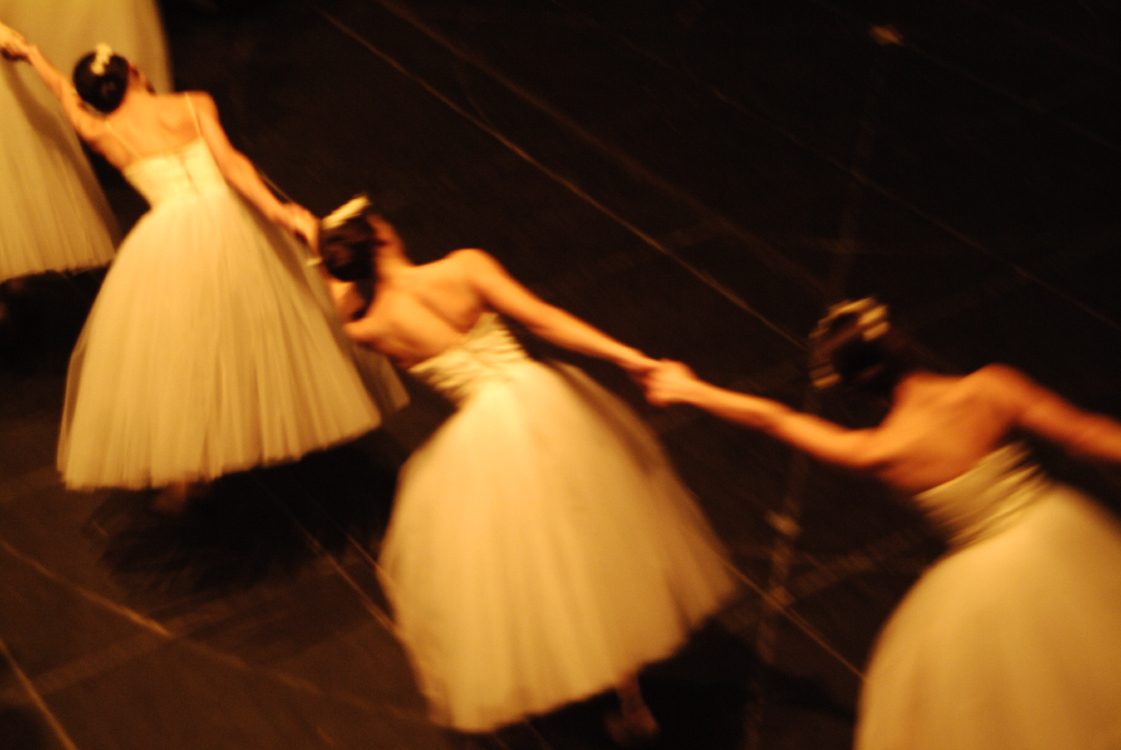 Dance~The Jewish
C~o~n~n~e~c~t~i~o~n Dance~The Jewish
C~o~n~n~e~c~t~i~o~n
by Sheila Orysiek |
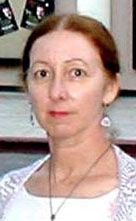 |
Sunset, Sunrise: Print
and the Internet
After being an integral part of the Jewish
Community for many years, the
demise of the San Diego Jewish Times is
justifiably lamented. But a sunset
is a precursor to a new day. One hopes
the night between is short and in
this instance we are blessed with the
existence of Jewishsighting.com which
will continue the “voice” across the
Jewish community with even wider
accessibility.
As a critic/journalist specializing in dance
it seems this is a good time for an
examination of critique/journalism in
hard copy print as compared to this
medium – the Internet. How does online
critique/journalism compare with
print? Is the standard for journalism
higher in a newspaper or magazine?
Exactly how do these two media compare?
Are there advantages to the
Internet for serious presentation of art
critique/ journalism?
This subject was addressed at the 2005
National Critics Convention held
in Los Angeles, attended by five hundred
critics from across the arts spectrum
and continues in the latest edition of
the Dance Critics Association
News Journal.
Having written over a number of years for
both print and Internet, I would
like to offer some comparisons and, as I
see it, the future of arts
critique/journalism. I could readily sum it up
in one sentence: The future
of arts journalism in general and critique in
particular is on the Internet on
sites such as Jewishsightseeing.com
and other professionally moderate
online forums and magazines dedicated to
the serious exchange of information.
Increasingly more and more recognized
critics/journalists are turning to the
Internet and some of them exclusively
so. The Internet is no longer the playpenfor the dilettante.
The tremendous audience one can reach across
the
world
can't help but be an advantage to both the writer and the art form for
which he/she writes. A reader can follow the progress of a particular
artist, artistic entity, or production from anywhere and at any time.
As quickly as a review can reach a newspaper readership, the
Internet
is faster.I can have a review up a couple of hours after attending
a performance versus
a day or two for a newspaper and a much longer
lapse of
time for a periodical.
This might very well affect ticket sales for
a
worthy performance.
This is also true for reporting on an ongoing event such as in the
midst
of a gala, convention, symposium, panel discussion, award ceremony,
competition, or
project. The reader can follow the progress of the event
as
it unfolds in real time.
Dance company web sites are now routinely providing pictures to
enhance online journalism/critique and have learned to value this medium.
In addition to pictures,
links can be embedded to video excerpts of the
performance, interviews of the
artists and other relevant news.
The review can be as long - or short - as the subject requires
rather than
constrained by space allotted by an editor. The writer has more
control not
only over length (a good critic is judicious in this regard) but
also content.
I speak from the unfortunate experience of having my work
"shaped" and
then eventually banned after more than two years as a masthead
writer, by
an editor of a major European dance publication because she
didn't agree
with American foreign policy though my writing was purely about
dance and
never about politics. I enjoy being able to control my product
without havingit extruded through someone else's prism or agenda.
This editor was also anti-Semitic and would not allow Jewish dance
companiesto advertise or be mentioned in her magazine. She was not swayed
by protest.
This is less likely on the Internet because it is easy for
someone to open an
opposing site and expose this kind of bigotry. Setting up
a rival magazine is
much more difficult.
In addition to the issue of space per article, the Internet can
also accommodate
the reportage of as many events as the administrator of
the
site deems worthy.
The space is expandable with need.
The Internet works especially well when the critique appears
initially
in
an interactive thread and can elicit response and then is
reformatted
into
a magazine which is how the premier dance site for which I
have written for
a several years operates. As a critic writing in such a
format,
I know I had
better get my facts correct or someone somewhere will
point out my errors
for the entire world to see. Should an error occur,
the
record can be corrected
whereas in hard copy the error is enshrined
on the
printed page.
Because of the interactive component, I know I have to be ready to
offer
justification, background, as well as analysis to support my
conclusions. I enjoy
that possibility of reader response very much.
I can't
hide behind an editor who
may or may not publish a negative
"Letter to the
Editor" if someone takes issue
with my work. I admit
at first trial this
possibility can be frightening or
threatening but only
if the critic is
unwilling to entertain the possibility of
learning from
his/her readership.
The interactive component also gives me the
opportunity to respond to
questions with the immediacy of the
Internet.
At the Ballet.co.uk site for which I write – under the pen name of
“Anjuli
Bai” (in addition to Jewishsightseeing.com)— after my
work appears
in
the interactive thread it is then reformatted into a
formal magazine
complete
with pictures of the performance and links
to other reviews I’ve
written, as well
as additional reviews, interviews
and feature articles on
the same dancers,
company, ballet, choreographer
or anything else connected
with the event.
This material is archived and
can be retrieved from the data
base readily
assessable to anyone across
the world.
For those who prefer to read from a hard copy, the article can be
printed
out in whatever size font is comfortable. No longer is one
dependent uponsome editor’s choice of font size.
There is also the possibility of multiple reviews of the same
performance
standing side by side; or of subsequent performances
of the same
program.
A credible critic will not feel threatened by
such an occurrence
and it can’t help
but expand the knowledge
and discernment of all of us –
writers and readers.
Now for the important complaint often put forth that the Internet
enables
amateur and otherwise less than acceptable critique/journalism.
This
problem
is not singular to the Internet. There are print journalists
who are
inept, without
the requisite basic fundamental knowledge of
the art form
about which they've undertaken to write, or have been dishonest.
There have been instances of plagiarism, not disclosing a personal
association
with the company or artist being critiqued, or even
writing about a performance
they have not actually attended. When
this happens, an
honest editor will take
care of the matter, but a less
than honest or
disinterested editor can shelterthat critic. Not so on the Internet
especially when the product appears in aninteractive thread.
There is no
where to hide.
As for the sincere amateur, rather than rend
our clothes over this
possibility,
we should welcome this neophyte. At a
serious site for
arts and/or journalism
such a writer should be encouraged.
The
readership is knowledgeable enough
to recognize the sincere neophyte
from the pretender and the experienced from
the beginner. We can't
grow
unless we welcome such sincerity of purpose
even if it is not as
yet a
professional voice. I am confident that at a serious arts/journalism
site a
pretender would not be suffered at all.
This leaves the problem of how to incorporate this new and
unstoppable
arena of Internet journalism into a world in which a writer
needs to be
paid.
Since periodicals/newspapers have been losing subscribers
and advertising
even before the general availability of the Internet, an
arts
writer would have
had this challenge in any case. For those who make
a
living - or a substantial
part thereof - this is indeed a problem. At the
last Dance Critics Conference in
Los Angeles it was noted that with any
new
technology it takes about twentyyears for the problems and
possibilities to
"shake-out."
The bottom line is that the problems of the horse shoe
manufacturers
didn't
stop the advent of motorized transportation - and there
are more horses in
America now than there were then. That a solution will
eventually offer itself,
I have no doubt. Successful people have always
managed to accommodate
change.
And so, let me welcome you to this site if
you are new! It is my
intention
in this column to present critique and
other relevant
information on dance
in general and ballet in particular, in
a Jewish
context. I hope you join me.
(return to top)
-------------------------------------------------------------------------------------
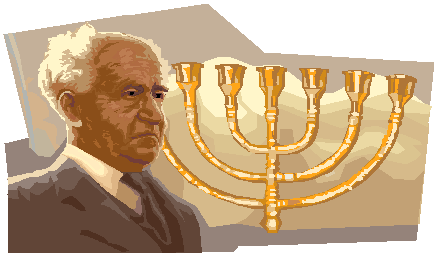 Jews
in the News
----------------------------------------------------------- Jews
in the News
-----------------------------------------------------------
News spotters: Dan Brin in Los Angeles, Donald H.
Harrison in San Diego, Marsha
Sutton in North San Diego County. To see a
source story click on the link within the
respective paragraph.
__________________________________________________
*The street on which Harry Bernstein lived in a British mill town
was
Jewish on one side, Christian on the other. William Grimes of
the New
York Times News Service
reviews Bernstein's The Invisible
Wall in today's San Diego
Union-Tribune.
*Barbara Fischbein and Sheila Lipinsky were among those
recently honored by the Salvation Army as Women of Dedication. Burl
Stiff
has
the story in The San Diego Union-Tribune.
*The family of Ron Goldman will receive the proceeds from an
auction of the film rights to O.J. Simpson's unpublished book If I
Did
It. Pop culture writer Deborah Netburn has
the story in today's
Los Angeles Times.
*Former world chess champion Garry Kasparov (who has described
himself as a half-Jewish, half-Armenian speaker of Russian) was
arrested in
Moscow's Pushkin Square in a protest against President
Vladimir Putin's
authoritarianism. He later was fined and released.
The San Diego
Union-Tribune's
story drew on reports from the
Chicago Tribune New Service and the
Associated Press.
*Howard Jacobson's Kalooki Nights, a novel featuring Jews in
Britain,is compared by critic Arthur Salm in today's San Diego
Union-Tribune
to Philip Roth's Potnoy's Complaint.
*Sol LeWitt, modern painter and sculptor, has died at 78.
Michael Kimmelman of the New York Times News Service
recounts LeWitt's
career in today's San Diego Union-Tribune.
*Daniel Pearl, the Jewish journalist slain in Pakistan in 2002, is
the
subject of a new policy at the Holocaust Memorial in Miami Beach.
His name will be added to the monument, according to a
caption story
in The San Diego Union-Tribune.
*Violinist Gil Shaham will open the 2007-2008 Jacobs Master Works
series in October at the San Diego Symphony. Getting him wasn't so
easy. Valerie Scher
explains in today's San Diego Union-Tribune.
*A set of DVD's of comedian Gary Shandling in his Larry Sanders
Show
will be released on Tuesday. Los Angeles Times reporter
Robert Lloyd has the
story.
*World Bank President Paul Wolfowitz, embattled in a controversy
over special financial treatment for his girl friend, has won praise
from
African finance ministers for the help he has directed to various countries
of their continent. A New York Times News Service
story
is in today's San Diego Union-Tribune.|
(Return to top)
_______________________________________________________________________
 And
finally... And
finally...
*Herb
Braverman sends along a
fanciful story on, ur, how the Internet was born... |

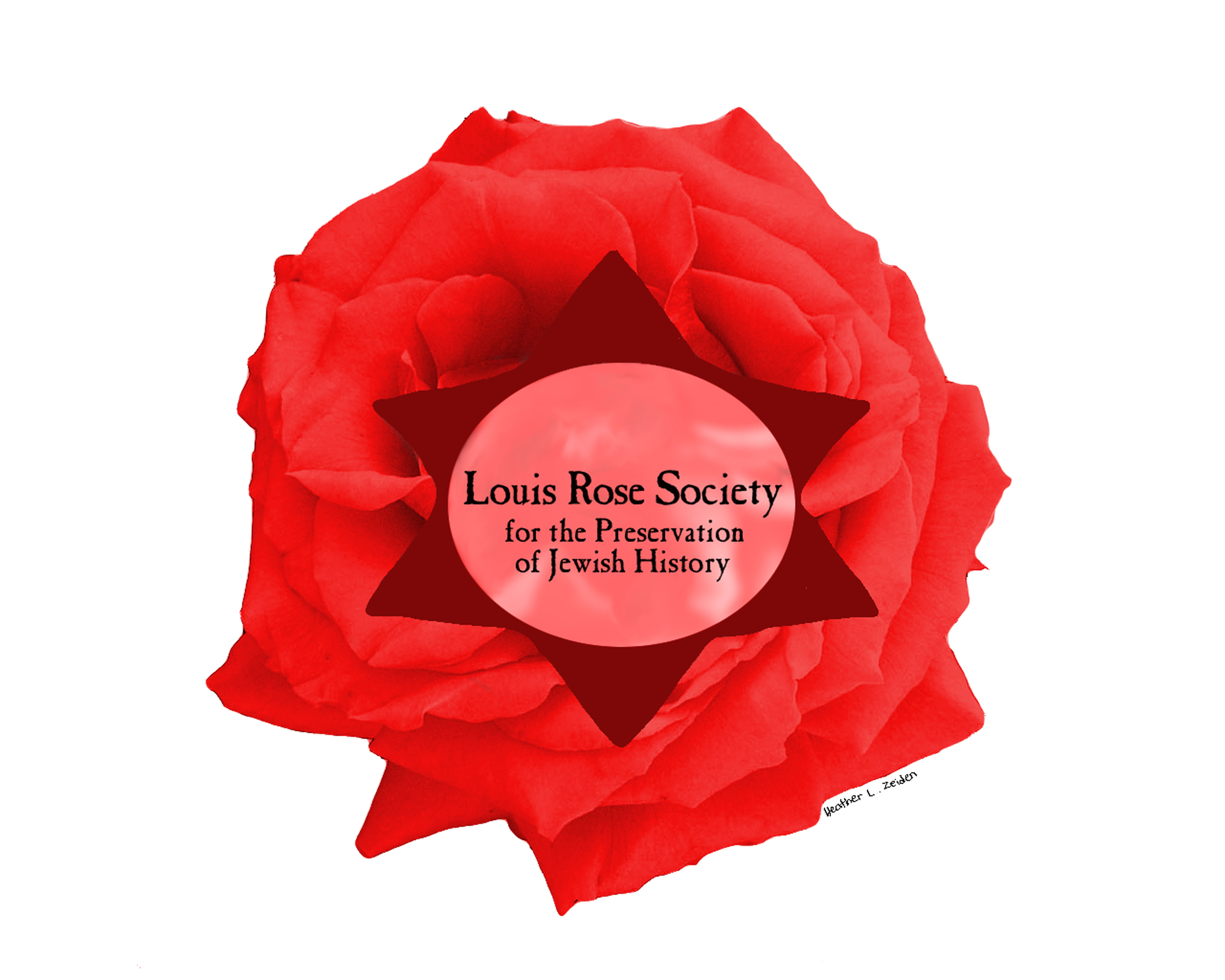

 Pledge
to the Six Million:
Pledge
to the Six Million: 








 Jews
in the News
-----------------------------------------------------------
Jews
in the News
-----------------------------------------------------------